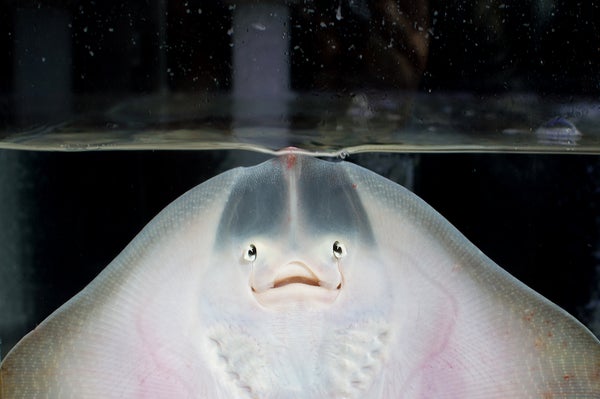February 18, 2024
3 min read
Charlotte, a stingray in a small North Carolina aquarium, is taking a DIY approach to reproduction
A stingray in a small aquarium in Hendersonville, N.C., has become pregnant—despite living in a tank without a male ray.
This seemingly miraculous event has stirred up online speculation that the expecting stingray, Charlotte, may have been impregnated by one of the small sharks that share her tank at the Aquarium & Shark Lab. But experts say that’s extraordinarily unlikely, on par with suggesting that a lion and a wolf could have baby “li-wolves” (“wolvions”?).
In fact, shark-ray babies would be even more dramatic than that, says Demian Chapman, director of the shark and ray conservation program at Mote Marine Laboratory & Aquarium in Florida. The last common ancestor of cats and dogs lived around 45 million years ago. Sharks and rays diverged from one another at least 300 million years ago, according to a 2021 paper in the journal Developmental Biology.
On supporting science journalism
If you’re enjoying this article, consider supporting our award-winning journalism by subscribing. By purchasing a subscription you are helping to ensure the future of impactful stories about the discoveries and ideas shaping our world today.
There’s another explanation for Charlotte’s impending motherhood, though, and it’s not much less weird: she almost certainly impregnated herself, a phenomenon known as parthenogenesis.
“Quite a variety of species of shark and rays are known to reproduce like that in captivity,” says Chapman, who studied the first known case of parthenogenesis in a hammerhead shark, which occurred in 2001. “We even have evidence of one species of ray doing it in the wild.”
Charlotte, a round stingray (Urobatis halleri), has a noticeable baby bump (visible on both her underside and her back) and may give birth at any time, according to the Aquarium & Shark Lab, which is run by the nonprofit…
Read the full article here







